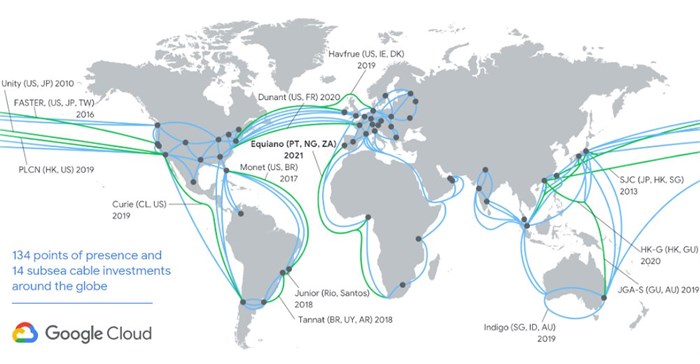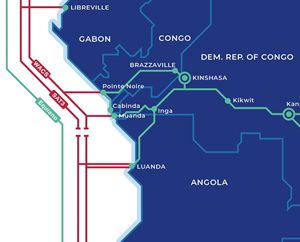
Equiano cable keeps Africa connected during undersea faults

Liquid Dataport, a business of Liquid Intelligent Technologies (Liquid), a pan-African technology group, is seeing a surge of Internet traffic on Equiano because of multiple subsea cables break this weekend.
Liquid’s investment that landed the 12TB of internet capacity at Cape Town in October last year has ensured that its Southern Africa customers did not experience a change in their network performance despite breaks in WACS and SAT-3 undersea cable systems off the coast of DRC.
“On Sunday, 6 August, we woke up to multiple reports of a natural rock fall in the Congo Canyon, off the coast of West Africa, causing breaks in multiple subsea cables. These cable systems are a crucial part of the network infrastructure servicing the African continent,” says David Eurin, CEO of Liquid Dataport.
Repairs underway

While work is underway to repair these cable systems, it will be some time before the complete restoration of services. Liquid’s decision to invest in multiple subsea cables - it administers 110,000km of fibre routes across 27 countries - was driven to ensure high availability for its customers, particularly in such situations.
“As part of our disaster recovery process and to offer high redundancy to our customers, we have migrated our customers’ West Coast traffic to our new Equiano subsea cable. Whilst this additional capacity has brought in a much-needed increase in bandwidth in Western and Southern Africa, the redundancy is also the reason we are able to minimise the impact on our customers,” concludes Eurin.
Equiano lifeline
Named for Olaudah Equiano, a Nigerian-born writer and abolitionist who was enslaved as a boy, the Equiano cable is based on space-division multiplexing (SDM) technology, with approximately 20 times more network capacity than the last cable built to serve this region.
The project was launched in 2018 with Alcatel Submarine Networks on construction duty, and the first phase of the project connected South Africa with Portugal.
It was the first subsea cable to incorporate optical switching at the fibre-pair level, rather than the traditional approach of wavelength-level switching.
About Lindsey Schutters
- Parliament questions State Digital Infrastructure Company - 31 Oct 2024
- Sentech painted as monopoly in Icasa market inquiry - 30 Oct 2024
- Maziv 'disappointed' by tribunal outcome - 29 Oct 2024
- Google extends African commitment with new AI skills investment - 29 Oct 2024
- Samsung Galaxy Z Fold6 is a poor fit for SA - 23 Oct 2024
View my profile and articles...